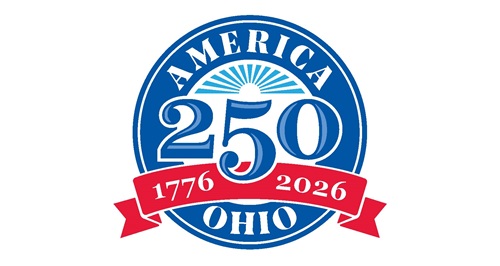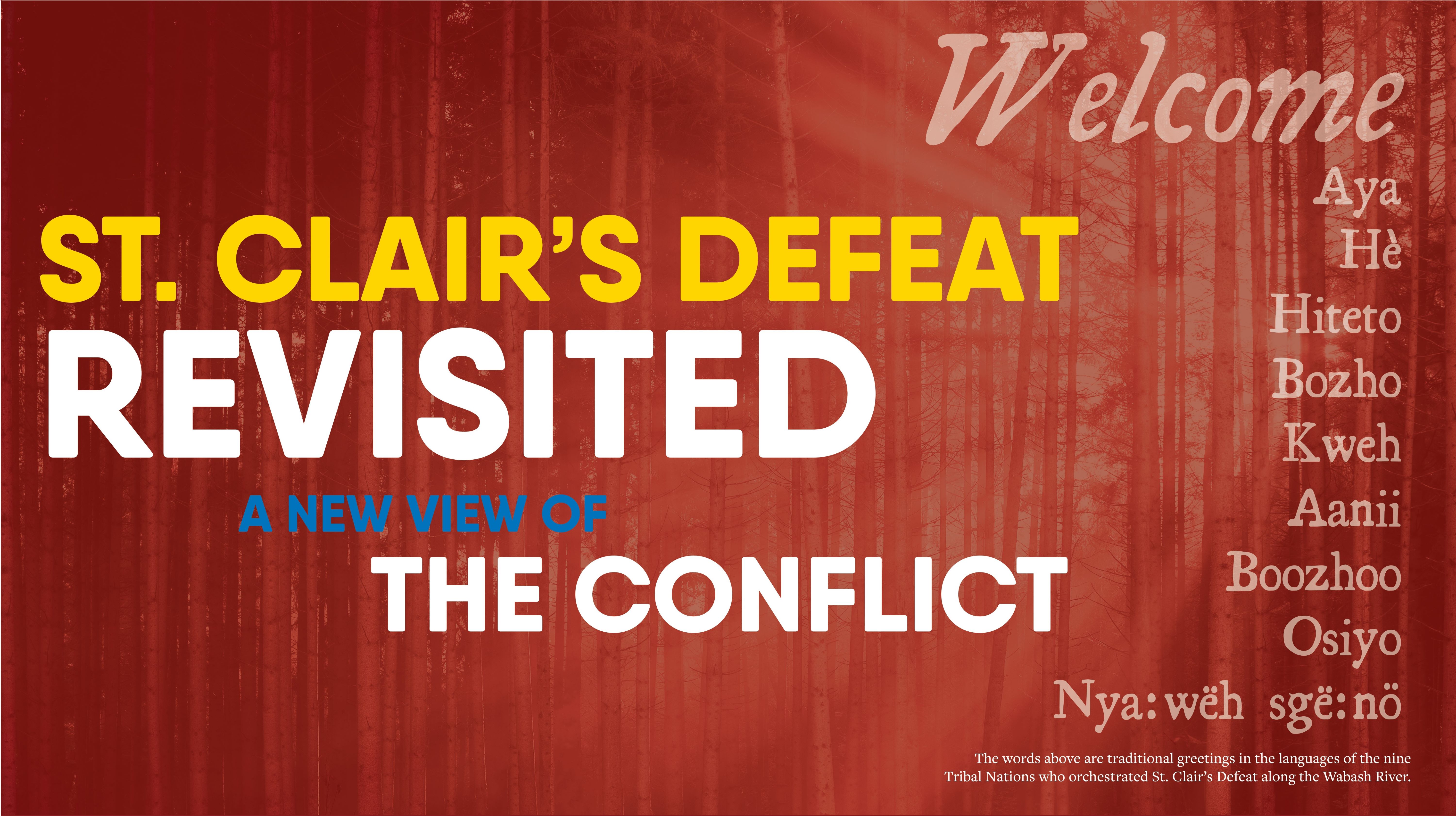
This traveling exhibit introduces you to the complex history of St. Clair’s Defeat, on November 4, 1791, and its context and aftermath with respect to the nine Tribal Nations who orchestrated this great defeat of the U.S. Military.
The exhibit’s four themes, design, and immersive qualities will contextualize the: 1) Background; 2) Battle and Native crescent strategy; 3) Aftermath including broken treaties, removal, and boarding schools; and 4) Persistence of Tribes today.
Exhibition Sites and Dates
- November 4, 2023 to January 7, 2024 - Fort Recovery Museum, Fort Recovery, Ohio
- January 19 to May 11, 2024 - The History Center, Allen County-Fort Wayne Historical Society, Fort Wayne, Indiana
- May 20 to December 1, 2024 - Charles Banks Wilson Art and Cultural Education Center, KahNe Hall, Northeastern Oklahoma A&M College, Miami Oklahoma
- January 24 to August 17, 2025 - Ohio History Center, Ohio History Connection, Columbus, Ohio
- Future venues and schedules TBD
Banner Exhibit Sites and Dates
- Permanent Exhibit - Fort Recovery Museum, Fort Recovery, Ohio
- October 24 to November 16, 2024 - Belmont County Heritage Museum, St. Clairsville, Ohio
- November 20, 2024 to April 13, 2025 - Hopewell Culture National Historical Park, Chillicothe, Ohio
- May 16 to October 4, 2025 - The University of Akron Institute for Human Science and Culture, Akron, Ohio
- Future venues and schedules TBD
Exhibit Guides
Video & Photos
-
Exhibit at Fort Recovery Museum





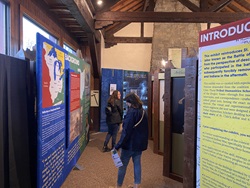
Exhibit at The History Center, Fort Wayne





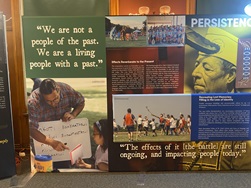
Exhibit at KahNe Hall,
Northeastern Oklahoma A&M College
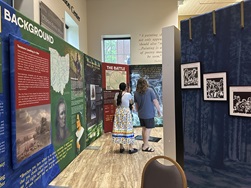
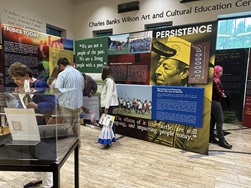
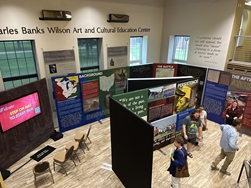




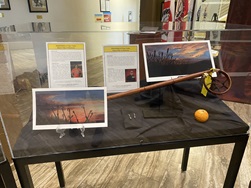
Exhibit at KahNe Hall,
Miami Tribe of Oklahoma Annual Meeting





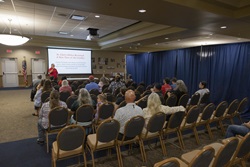
Exhibit at Ohio History Connection


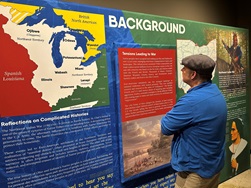
Banner Exhibit at Fort Recovery Museum


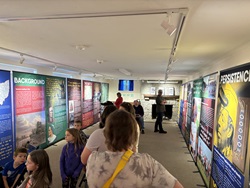
Banner Exhibit at Belmont County Heritage Museum,
St. Clairsville, Ohio


Banner Exhibit at Oklahoma Indian Child Welfare Association Conference


Banner Exhibit at Hopewell Culture National Historical Park


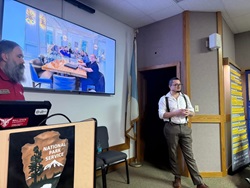
Banner Exhibit at Wyandotte Nation Winter Gathering


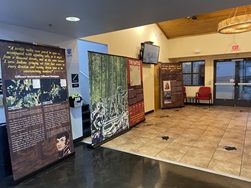
Banner Exhibit at The University of Akron, Institute of Human Culture & Science


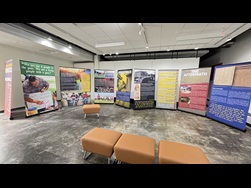
Media
Additional Information on St. Clair's Defeat
Principle Investigators
(please contact for more information)
- Christine Thompson, Emeritus Assistant Director and Archaeologist, Applied Anthropology Laboratories, Ball State University
- Dr. Kevin C. Nolan, Director and Senior Archaeologist, Applied Anthropology Laboratories, Ball State University
Acknowledgements
Tribal Humanities Scholars
- Nekole Alligood (Delaware Nation), Ohio History Connection NAGPRA Specialist
- Matthew Bussler (Pokagon Band of Potawatomi Indians), Tribal Historic Preservation Officer
- Chief Ethel Cook (Ottawa Tribe of Oklahoma)
- Stacey Halfmoon (Caddo Nation), Shawnee Tribe Executive Director of Cultural and Historic Preservation
- Rhonda Hayworth (Ottawa Tribe of Oklahoma), Historian and Tribal Historic Preservation Officer
- Larry Heady (Delaware Tribe of Indians), former Tribal Historic Preservation Officer
- Second Chief Norman Hildebrand (Wyandotte Nation)
- Diane Hunter (Miami Tribe of Oklahoma), former Tribal Historic Preservation Officer
- William Tarrant (Seneca-Cayuga Nation), Tribal Historic Preservation Officer
- Tonya Tipton (Shawnee Tribe), Tribal Historic Preservation Officer
- Logan York (Miami Tribe of Oklahoma), Tribal Historic Preservation Officer
- Chief Glenna Wallace (Eastern Shawnee Tribe of Oklahoma)
Additional Tribal Review
- Erin Paden, Tribal Historic Preservation Specialist, Shawnee Tribe
Exhibit Designer
- Dr. Kristin Barry, Associate Professor of Architecture, Department of Architecture, Ball State University
Funding Acknowledgements
This traveling exhibit has been made possible in part by a major grant from the National Endowment for the Humanities. Any views, findings, conclusions or recommendations expressed in this video do not necessarily represent those of the National Endowment for the Humanities
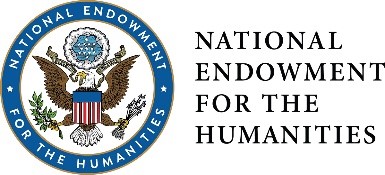
This StoryMap and Welcome Video has been funded by National Trust for Historic Preservation’s Telling the Full History Preservation Fund, with support from National Endowment for the Humanities. Any views, findings, conclusions or recommendations expressed in this project do not necessarily represent those of the National Trust or the National Endowment for the Humanities.

The banner exhibit is funded in part by the America 250-Ohio Commission. Any views, findings, conclusions or recommendations expressed in this exhibit do not necessarily represent those of the America 250-Ohio Commission.
